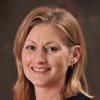Explore all the information on
Swine health
Pig diseases can be caused by bacteria, viruses, protozoa, nutritional deficiencies, poisonous substances, internal and external parasites.
Bacterial diseases include swine erysipelas, swine dysentery, infectious poly-arthritis etc. Viral and mycoplasma diseases include African swine fever, swine influenza, enzootic pneumonia of pigs, vesicular exanthema of swine, transmissible gastroenteritis etc. Helminthiasis as a health problem in pigs is mainly caused by worms like the lungworm, ascaris worm etc. Nutritional diseases include piglet anemia, parakeratosis etc. External parasitic infections include mange, lice, jiggers etc.
How to tell that a pig is in bad health:
General signs: dullness, loss of appetite, labored or rapid breathing, sudden deaths, loss of weight, low weight gain and fever usually manifested by shivering of the pig.
Signs expressed on the skin: reddening of the skin or skin discoloration, loss of hair and hardening of some parts of the skin, itching and cracking of the skin.
Other signs: lameness, cough, abnormal nasal discharges, diarrhea with a putrid smell, abnormal content and color of feces and abortions.
Streptococcosis are diseases caused by different species of the genus Streptococcus and, in the case of swine, mainly due to Streptococcus suis . There are 35 recognised serotypes of S. suis, being the serotypes 2, 1/2, 7 and 9 the most frequently isolated in this...
Comments : 0
Recommendations: 1
The use of feed flavors offers the opportunity to improve the lactation and voluntary feed intake of sows. Listen to Professor Bruno Silva from the Federal University of Minas Gerais in Brazil to know more!
...
Comments : 0
Recommendations: 1
...
Comments : 0
Recommendations: 1
During 2019, outbreaks of S. zoo septicemia were reported in Ohio and Tennessee with mortality up to 50%. Then, in January 2021, a sow herd in Indiana experienced abnormally high mortalities related to S. zoo. The emergence of S. zoo associated with mortalities at a level not previously seen in the US prompted the Swine Health Information Center (SHIC) to fund a project conducted at Iowa State University (ISU) and the National Veterinary Services Laboratory to meet the urgent need for...
Comments : 0
Recommendations: 0
By Jordan Bartel/NC State Veterinary Medicine
We know a lot about antimicrobial resistance, but understand even less.
We know how it moves across farms, between animals, people and borders, and we also know how to track it. We know it doesn’t discriminate, impacting wealthy cities and impoverished nations, and we don’t have a universal approach to stop it. We know how we can eliminate using certain antibiotics that contribute to resistance,...
Comments : 0
Recommendations: 0
INTRODUCTION Producing food from farmed animals is a large and very complex process that occurs in integrated networks made up of many individual animal producers, supporting businesses (veterinarians, feed suppliers, animal haulers, animal marketers, etc.), and processors (slaughter plants) (1–4). Farmed animal food has many names including Agri-Food systems, food animal value chains, food supply chains, livestock production systems, and others. For simplicity...
Comments : 0
Recommendations: 1


Strategic use of feed ingredients, nutrients and feed additives to enhance performance and health of weaned pigs
Suggested link
Introduction Salmonella is a worldwide-distributed pathogen that affects both humans and animals 13 . This microorganism is usually associated with intensive animal production, such as swine, since the confinement of animals facilitates the transmission and persistence of the pathogen in farms. Salmonellosis may cause significant economic losses due to mortality, morbidity, stunted growth, increased feed conversion rates and costs of non-specific...
Comments : 0
Recommendations: 0
These new ASF guidelines seek to assist OIE Members and stakeholders in the pig industry in the practical implementation of compartmentalisation specific to the disease in line with the related chapters of the Terrestrial...
Comments : 0
Recommendations: 0
Henry Berger (Global Head of Strategic Partnerships & Pipeline Innovation Integrated Health Management, Boehringer Ingelheim) speaks about his upcoming presentation at the Animal AgTech Innovation Summit 2021 on March 8, and also discusses the changes in the industry during the pandemic....
Comments : 1
Recommendations: 3
Objectives: A retrospective epizootic analysis is conducted by us testifies that among infectious pathology of pigs respiratory diseases in the Ukrainian pig farms are most mass and unprofitable and largely reduce the profitability of the industry. From all respiratory diseases in pig breeding farms, bronchopneumonias diagnose mostly, and the special danger among them is presented by respiratory diseases of infectious etiology.
Therefore the aim of our work was to...
Comments : 0
Recommendations: 0
Giving iron dextran injections to nursing piglets, vaccinations to breeder gilts and sows or growing pigs, and antibiotic injections to treat pigs that may become sick are all routine practices on hog farms. As components of a comprehensive herd health program, these practices contribute to the production of quality pork from healthy hogs. But producers and herd technicians must remember that they bear an important responsibility when administering injectable vaccines and medications....
Comments : 1
Recommendations: 0
1. Updates on BVDV Infection in Swine Bovine viral diarrhea (BVD) is an infection caused by the bovine viral diarrhea virus (BVDV), belonging to the genus Pestivirus, family Flaviviridae, with single-stranded positive polarity RNA [1]. Viruses belonging to the Pestivirus genus infect hosts of several animal species and include viral agents of great impact for animal production [2,3]. The Pestivirus species have been recently named from A to K and, among them, the Pestivirus A...
Comments : 2
Recommendations: 0
1. Introduction Sapelovirus is a non-enveloped virus with a single strand positive-sense RNA genome. The virus within the Picornaviridae family belongs to the genus Sapelovirus [1] which contains three species, with a unique genome organization: Sapelovirus A formerly known as porcine sapelovirus (PSV), Sapelovirus B as simian sapelovirus, and Avian sapelovirus represented by duck picornavirus [1]. PSV consists of a single serotype, infects pigs and it is not known to infect...
Comments : 0
Recommendations: 0
1. Introduction Porcine circoviruses (PCVs) are small DNA viruses and have four representatives, PCV-1, PCV-2, PCV-3, and tentatively, PCV-4. PCV-1 is known as non-pathogenic for pigs [1], while PCV-2 has been associated with several conditions known as porcine circovirus diseases (PCVDs) [2]. PCVDs include PCV-2 systemic disease (PCV-2-SD), PCV-2 reproductive disease (PCV-2-RD), porcine dermatitis and nephropathy syndrome (PDNS), and PCV-2 subclinical infection (PCV-2-SI) [2]....
Comments : 0
Recommendations: 0
1. Introduction African swine fever (ASF) is a viral disease of domestic and wild suids currently threatening the global porcine industry [1,2]. Considered a notifiable disease to the World Organization for Animal Health (OIE), it has advanced remarkably in Africa, Europe, and Asia in recent years [3]. ASF is caused by an icosahedral, double-stranded DNA virus, the only member of the family Asfarviridae and the genus Asfivirus [4]. The current spread of African swine fever...
Comments : 0
Recommendations: 0
1. Introduction Childhood obesity has been traditionally associated with affluent social environments in highly developed countries. Currently, it is scattering with respect to children from all social statuses in both developed and developing countries. Hence, there is an urgent necessity to tackle this health problem; mainly because overweight and obese children are prone to develop cardiometabolic disorders in infancy, youth and adulthood [1]. The pathogenic mechanisms...
Comments : 0
Recommendations: 0


Strategic use of feed ingredients, nutrients and feed additives to enhance performance and health of weaned pigs
Suggested link
1. Introduction African swine fever virus (ASFV) is the only member of the virus family Asfarviridae, and is the etiological agent that causes African swine fever (ASF). This large double-stranded DNA virus has more than 150 open reading frames (ORFs) that are encoded in the 180–190 kilobase genome. ASF disease can range from sub-clinical to lethal depending both on the specific host that is infected and the specific strain of virus [1]. Several sub-Saharan African...
Comments : 0
Recommendations: 0
BERLIN ( Reuters ) - A first case of African swine fever (ASF) has been found in a wild boar in the eastern German region of Saxony, Germany’s federal agriculture ministry said on Saturday.
The ministry said...
Comments : 0
Recommendations: 0
Dr MEGAN EDWARDS reports studies showing the benefits of spray dried plasma proteins in sow and piglet diets. ...
Comments : 0
Recommendations: 0
ABSTRACT Porcine reproductive and respiratory syndrome virus (PRRSV) and porcine parvovirus (PPV) infections cause significant economic losses to the pig industry and are considered the most economically important viral diseases of intensive swine production. Despite numerous reports on both diseases in several countries worldwide, the status of PRRSV and PPV in Nigeria remains largely unknown. Thus, a serological survey was conducted to determine the prevalence of PRRSV and PPV...
Comments : 0
Recommendations: 0













.jpg&w=3840&q=75)









